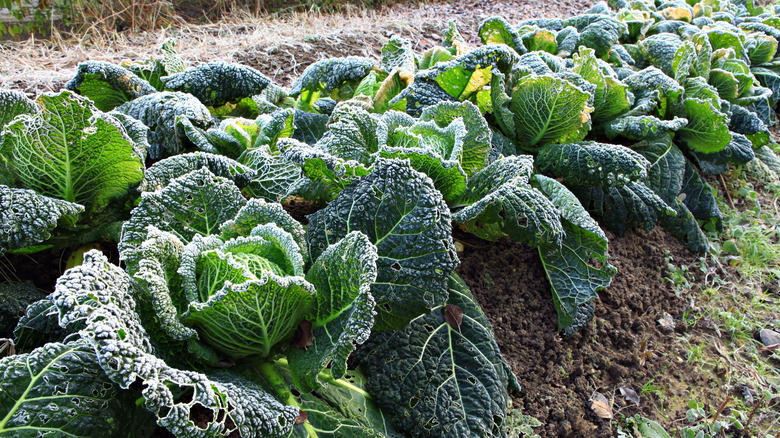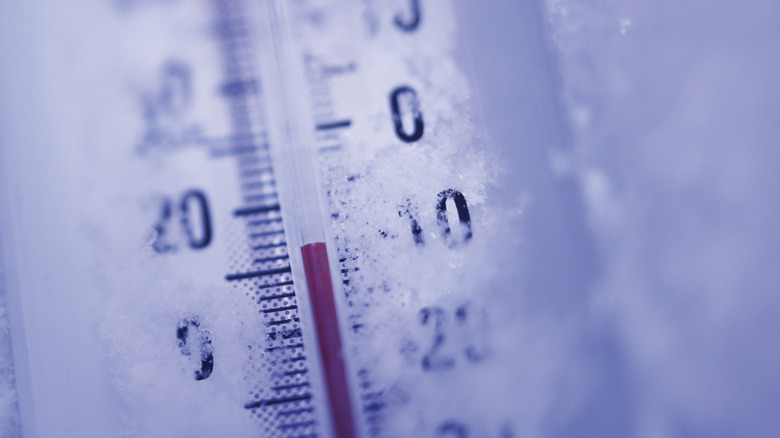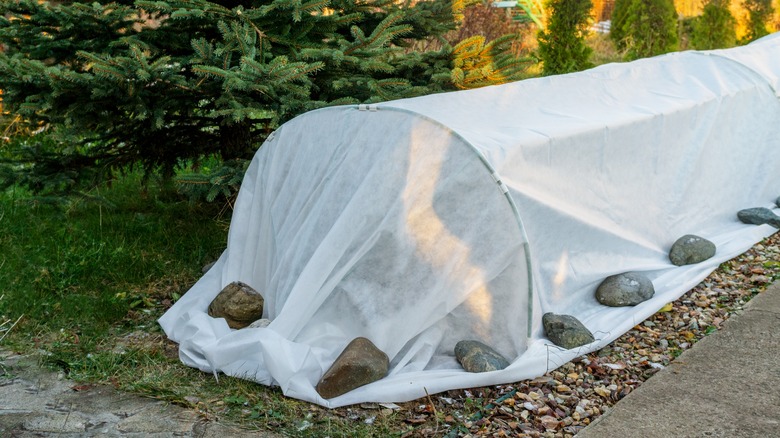How To Protect Your Vegetable Garden From Freezing Temperatures
As winter gives way to the promise of warm spring weather, gardeners prepare to plant their first crops. Before you plant seeds or place young seedlings in the ground, however, it is important to have a frost protection plan in place. Otherwise, you might have to do it all again and it's just not as fun the second time. When the days start getting consistently warm, it's easy to believe that freezing temperatures have passed. But very often, there's a surprise cold front and winter returns for one last hurrah. Thankfully, if you're prepared, those cold days and nights do not have to be full of worry.
As you make your plan to protect your vegetable garden from freezing temperatures, it's worthwhile to familiarize yourself with your USDA Hardiness Zone. This tells you your area's first and last expected frost dates, which can help you know when to start planting. Keep in mind, though, that these are average frost dates, and your actual last frost will vary from year to year. Since those dates are unpredictable, here are a few ways to protect your garden from a surprise freeze.
When you should protect vegetables from the cold
Most spring vegetables like lettuce, onions, potatoes, and kale are frost tolerant, so they do not require protection from a light freeze, which is when temperatures stay above 28 degrees Fahrenheit, states Garden City Harvest. Anytime temperatures drop below this level, it is considered a hard freeze, which will kill most plants.
Vegetables that are typically grown after the last chance of frost has passed are considered "tender." These crops include summer annuals like tomatoes, peppers, squash, and cucumbers. Any temperature below 32 degrees Fahrenheit will kill these plants, so if you get a really late frost, even your summer veggies can be affected. When deciding whether to put out frost protection for your plants, it's better to be safe than sorry. Any time the projected low is within a few degrees of a freeze, protect your plants in case temperatures drop below what is anticipated.
Frost protection methods
If you are expecting more than a few days of frosty temperatures, the University of Georgia Extension suggests covering plants with about 2 inches of straw to help retain heat from the soil. If you have a small garden, you can wrap or cover seedlings with old towels and blankets. You can also search your recycle bin for milk cartons and soda bottles. Cut the bottom off and stick them over individual plants to create a makeshift greenhouse. Just be sure to remove them as soon as the weather warms back up so you don't accidentally cook your plants! If the weather is windy, secure the mini-greenhouses with a rock or cover them with blankets for extra protection.
If you have rows of crops, frost cloth is a good investment that you can use for several years to protect plants from late frost and prolong your harvest through the fall. You can lay frost cloth directly over your plants on the ground, securing the edges with rocks or whatever you have on hand to keep the cloth from blowing off. More industrious gardeners can also create protective hoops from PVC and cover them with frost cloth, like in these beds from The Creative Vegetable Gardener.


